Can’t seem to keep an exercise routine? Your friends probably think the same.
by: Paul W. Park M.S. CSCS
A client of mine was the first person in her family to start making exercise a priority in her life. As a physician, she knew the health benefits, mental and physical, of living a physically active lifestyle, but it was difficult for her to make it part of her normal routine.
Not surprisingly, her chats at work weren’t about weekend workouts, (sorry doctors, you guys are notoriously bad at consistent exercise). So she sought help outside of her social network, a different social network of trainers/coaches and exercise enthusiasts. Fast forward a few years later, her husband and mother-in-law train regularly a few days a week, their family goes on weekly bike rides, and new brutal exercises that I have her husband do has become normal dinner conversation.
During this once in a century pandemic, while the forefront of our minds is on the spread of a biological virus, we must not forget the ability of metaphysical things such as ideas, principles, and habits to spread. Our social networks, through which these ideas spread, have more influence over our behaviors than most of us give credit for. Did most of your friends quit smoking? Your chances of kicking the habit increase. (1) Trying to lose some weight? Embarking on this challenging task with a group of friends rather than alone will increase your chances of not only losing weight, but keeping it off in the long term. (2) Free will is a concept that we hold dear to our hearts, and yet many of us fail to reach our weight loss or fitness goals. We blame our lack of discipline and willpower, but don’t fully consider the effects of the social environment that we are a part of.
Our biological drive to be part of a social network is sometimes lost within the individualistic culture that is touted in western society. Try serving carnitas tacos to a devout Jewish family or wearing a Yankee hat into Boston’s Fenway park, and you will understand the strength of social ties on behavior. Like a school of fish traveling in a coordinated, almost rehearsed like fashion, our social networks are human superorganisms, as explained by Christakis and Fowler (3) in their book Connected, that alter and change our everyday behaviors more than we give credit for.
“Seeing ourselves as part of a superorganism allows us to understand our actions, choices, and experiences in a new light. If we are affected by our embeddedness in social networks and influenced by others who are closely or distantly tied to us, we necessarily lose some power of our own decisions. Such a loss of control can provoke especially strong reactions when people discover that their neighbors or even strangers can influence behaviors and outcomes that have moral overtones and social repercussions. But the flip side of this realization is that people can transcend themselves and their own limitations” (3, p. xii).
Can we leverage this power of our social networks to transcend the dearth of physical activity that we are facing today? An example 30 years ago showcases how a change in normal social behavior dramatically changed the health of our country (4). Smoking indoors was widely considered the norm, with tobacco advertisements showing smiling good looking doctors were common. In time, research showed the health detriments of being a smoker, and the government aptly recognized and regulated the industry. Now normal is having to go outside in the cold huddled together with one possible friend or two. In effect smoking is no longer considered the social norm that it once was, as inactivity and overconsumption could be considered the norm today.
Comparing the norms of smoking and inactivity however is like apples to oranges; it does not illustrate the increased effort and strategy it will take to unseat inactivity. Our evolutionary biological drive is to conserve energy; for most of our history on this planet, we did not know when we would get our next meal. This drive to conserve and overconsume strengthened by social norms of inactivity will require more than simple government guidelines. Unlocking and leveraging the power of our superorganism-like social networks, and our tendency to be affected by those around us is the key to fighting the sedentary crisis.

We are all connected
Walking around New York City and then visiting Miami can give us an appreciation for the power of social networks. Appropriate to the current times, Manhattanites are much more likely to wear masks than those of the more conservative counties of Florida (5). The collective attitude of New Yorkers is to wear masks. It makes sense to us. I suspect walking around without a mask in New York will get you looks of disapproval and judgement, while in Florida a contrasting laissez faire attitude of “Not everyone is doing it, so why do I need to?” will probably be the norm.
The best chance we have of encouraging physical activity is to make it normal and commonplace. To have a person’s immediate social circle be involved in a weight loss journey can improve that person’s chances of long term weight maintenance. Even having the social support of strangers embarked on the same struggle can make a difference (2). There is evidence of true groups, team workouts with group dynamic principles that were designed to increase cohesiveness, increasing exercise program adherence rates over standard exercise classes (6). If we can develop a sense of collectivism and community, participants are more likely to stick to an exercise program. This is a part of how Crossfit became popular in the 2010’s, the togetherness of a group of exuberant exercisers cheering each other on as each push and suffer through excruciating discomfort.
While our tendency to be affected by others can be leveraged to create health promoting behaviors, there’s also evidence for the spread of unhealthy ones. Christakas and Fowler analyzed data from the Framingham Heart Study, and found that obesity spread just like a physical virus (7). “If a person’s friend became obese, it increased the likelihood that he/she would become obese by 57%, with larger effects found for same- sex friends. If a person’s sibling became obese, he/she was 40% more likely to become obese, with larger effects again seen for same-sex relationships. If a person’s spouse became obese, he/she was 37% more likely to become obese” (8, p. 412).
An example for this sort of spread could be your friends starting to drop out of that running program you guys decided to start on together. Further, those same friends instead invite you out for happy hour for drinks and bar food. There is an increased chance of you choosing french fries and beer over a workout class full of strangers.
When firefighters deal with forest fires, they use controlled fires to deter and combat the spreading flame. With evidence of the obesity epidemic spreading through our social networks along with a cultural tendency for sedentarism, the “fight fire with fire” analogy is appropriate, and starts with understanding and accessing the transcendent ability of our social networks. This is a call for those seeking lifestyle change as well as for exercise professionals to start understanding and leveraging a new global social network oriented approach, an all encompassing approach that considers the forest for its trees.
If you are personally looking to keep an exercise habit, consult and spend more time around those who live the lifestyle you are looking to live. Get to know the people in your exercise class or gym as this will increase your chances of coming back. At the very least it will make it much easier to say no to that happy hour if you know there is a friend looking forward to seeing you in class. Ask your friends to join you for walks, hikes, or even exercise classes. Sometimes people are just looking for an invite. The next new exercise contagion, just like ripples of a thrown rock in water, can start with you!

Fun all around!
For coaches and trainers, consider how one on one training might not promote the adherence benefits that come with group training. If you are already doing group training, try to find ways to get people working together rather than just next to each other. This can be done through team workout challenges or attendance accountability challenges. At UpFit Training Academy, by issuing a 6 week attendance challenge at the start of 2021, we saw an improvement in attendance from an average 7.2 classes per participant in 2020 to an average 10.7 classes per participant in 2021. A team like dynamic promoted within the training can be the difference in whether a new trainee becomes consistent, sees results and therefore sticks with an exercise program.
Last but not least, our public health policy makers must start realizing the connectedness and relevance of social networks for creating positive health habits and exercise. The US is by far the leading spender of health care costs compared to our peer nations, and yet has one of the lowest life expectancy rates (9). High profiled politicians leading with and promoting their own exercise routines can also have tremendous downstream social effects. While exercise is likely not the only determinant factor (food industry/nutrition), we can only imagine a vastly different outlook of the most recent pandemic if a culture of movement and an appreciation of exercise was the norm. A consistent exercise and movement practice will create a more resilient and healthy country (10), and the collective rising tide of our social networks is one of the keys to lifting every person’s individual health boats.
References:
- Christakis, Nicholas A., Fowler, J. H. (1008). Quitting in Droves: Collective Dynamics of Smoking Behavior in a Large Social Network. New England Journal of Medicine, 358(21), 2249–2258. https://doi.org/10.1056/NEJMsa0706154
- Wing, R. R., & Jeffery, R. W. (1999). Benefits of recruiting participants with friends and increasing social support for weight loss and maintenance. Journal of Consulting and Clinical Psychology, 67(1), 132–138. https://doi.org/10.1037//0022-006x.67.1.132
- Christakis, N. A., & Fowler, J. H. (2009). Connected (1st ed.). Little, Brown and Company
- Lori M. Millner, Mark W. Linder, and R. V. J. (2019). Measuring the Impact of the Reduction in Tobacco Smoking on US Lung Cancer Mortality, 1975–2000: An Introduction to the Problem. Physiology & Behavior, 176(3), 139–148. https://doi.org/10.1111/j.1539-6924.2011.01745.x
- Igielnik, R. (2020, June 23). Most Americans say they regularly wore a mask in stores in the past month; fewer see others doing it. Pew Research. https://www.pewresearch.org/fact-tank/2020/06/23/most-americans-say-they-regularly-wore-a-mask-in-stores-in-the-past-month-fewer-see-others-doing-it/
- Burke, S., Carron, A., Eys, M., Ntoumanis, N., & Estabrooks, P. (2006). Group versus individual approach? A meta-analysis of the effectiveness of interventions to promote physical activity. Sport and Exercise Psychology Review, 2(1), 19–35.
- Christakis, N. A., & Fowler, J. H. (2007). The Spread of Obesity in a Large Social Network over 32 Years. New England Journal of Medicine, 357(4), 370–379. https://doi.org/10.1056/nejmsa066082
- Smith, K. P., & Christakis, N. A. (2008). Social networks and health. Annual Review of Sociology, 34, 405–429. https://doi.org/10.1146/annurev.soc.34.040507.134601
- Tikkanen, R., and Abrams, M.K. (2020, January 30). U.S. Health Care from a Global Perspective, 2019: Higher Spending, Worse Outcomes?. The Commonwealth Fund. https://www.commonwealthfund.org/publications/issue-briefs/2020/jan/us-health-care-global-perspective-2019
- Wood, T. R., & Jóhannsson, G. F. (2020). Metabolic health and lifestyle medicine should be a cornerstone of future pandemic preparedness. Lifestyle Medicine, 1(1), 1–5. https://doi.org/10.1002/lim2.2


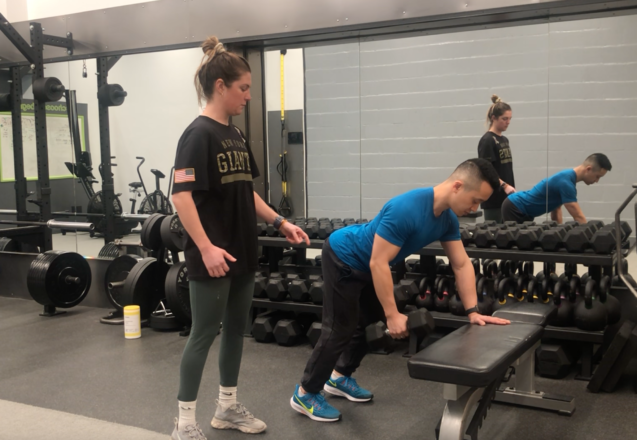



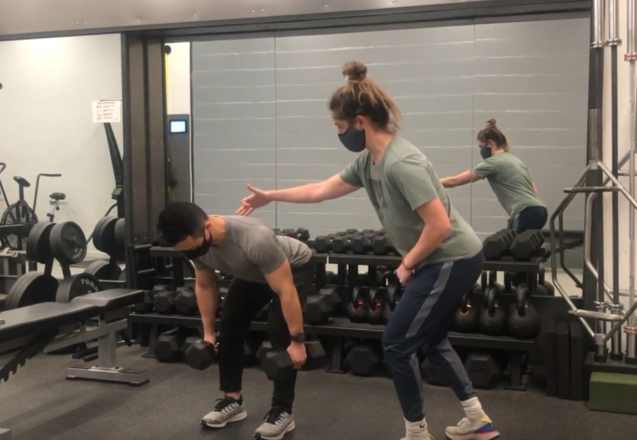


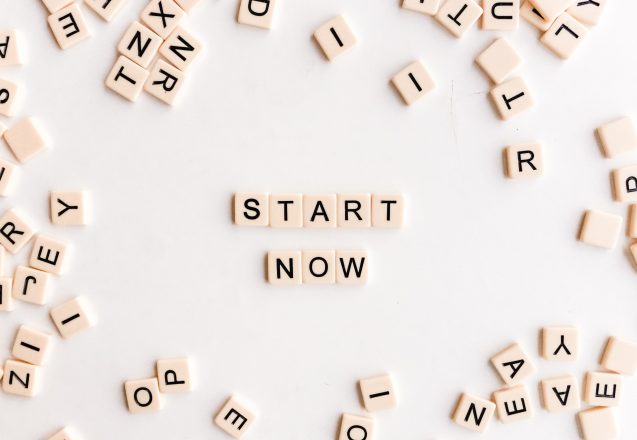
 Every year people make New Year’s resolutions and by the end of the second week of January, most of them are broken. One of the problems is that they’re just resolutions, without a path to reach them. You can start your resolution today, but don’t forget to turn it into a goal that is specific, measurable, attainable, relevant and time-based. It’s the only way you’ll make your resolutions come true.
Every year people make New Year’s resolutions and by the end of the second week of January, most of them are broken. One of the problems is that they’re just resolutions, without a path to reach them. You can start your resolution today, but don’t forget to turn it into a goal that is specific, measurable, attainable, relevant and time-based. It’s the only way you’ll make your resolutions come true.
 At Upfit Training Academy in New York, NY, we focus on programs that help you become your healthiest and fittest. What you eat, exercise, how much you sleep and a broad range of other factors affect your health, but some are more important than others are. Diet is probably at the top of the list for good health. There are many philosophies on what type of diet is the best. Each choice should be individual, based on personal needs and preferences. A plant-based diet is one of those options. Is it the right choice for you? Investigating the pros and cons is the only way to decide.
At Upfit Training Academy in New York, NY, we focus on programs that help you become your healthiest and fittest. What you eat, exercise, how much you sleep and a broad range of other factors affect your health, but some are more important than others are. Diet is probably at the top of the list for good health. There are many philosophies on what type of diet is the best. Each choice should be individual, based on personal needs and preferences. A plant-based diet is one of those options. Is it the right choice for you? Investigating the pros and cons is the only way to decide.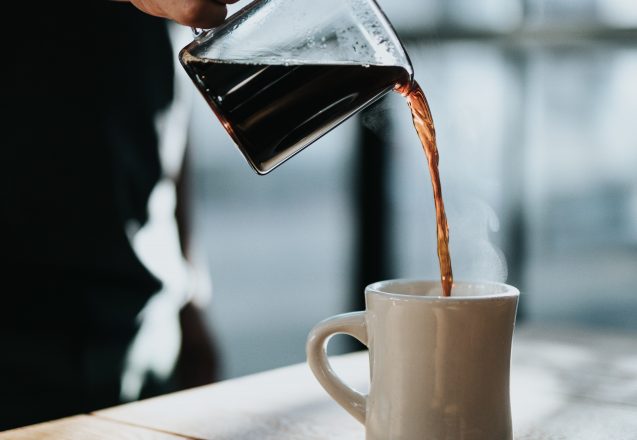
 If you can’t get started in the morning without your favorite cup of joe, then you don’t want to hear that coffee is bad for your health. If you love that coffee, there’s good news on the horizon, plus some bad news, too. Coffee gets mixed reviews when it comes to whether or not its healthy. It has both good and bad plant chemicals and nutrients in it.
If you can’t get started in the morning without your favorite cup of joe, then you don’t want to hear that coffee is bad for your health. If you love that coffee, there’s good news on the horizon, plus some bad news, too. Coffee gets mixed reviews when it comes to whether or not its healthy. It has both good and bad plant chemicals and nutrients in it.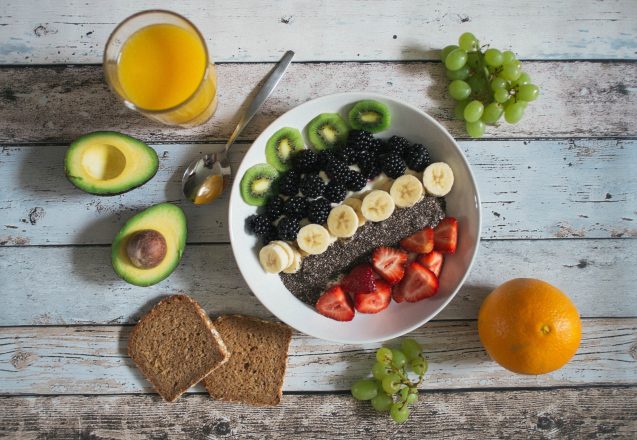
 Healthy breakfasts help you start off the day right and can help you lose weight, by keeping you feeling full longer. I have several favorites and some that clients have shared. In fact, if you have a healthy breakfast option you’d like to share, please feel free to do so in the comment section. We all are better when we help each other with knowledge. Some people simply do not like to eat breakfast. In fact, some are natural intermittent fasters. For the rest of us, here are some breakfasts that are perfect for the weekend and some that will get you out of the house quickly.
Healthy breakfasts help you start off the day right and can help you lose weight, by keeping you feeling full longer. I have several favorites and some that clients have shared. In fact, if you have a healthy breakfast option you’d like to share, please feel free to do so in the comment section. We all are better when we help each other with knowledge. Some people simply do not like to eat breakfast. In fact, some are natural intermittent fasters. For the rest of us, here are some breakfasts that are perfect for the weekend and some that will get you out of the house quickly.
 It’s been a tough time and getting back to normal is even tougher. As your life gets busier and more complicated, with travel to other parts of the country, keeping fit on the go becomes one of the more perplexing problems. I have some clients that prefer the gym environment and strictly workout here. Others schedule time once or twice a month, and other times they workout on their own using the virtual training. Still, others are quite content to use the virtual training for their normal workout and one on the go. No matter which you do, stay fit should be your top priority. So do the one that works best for you.
It’s been a tough time and getting back to normal is even tougher. As your life gets busier and more complicated, with travel to other parts of the country, keeping fit on the go becomes one of the more perplexing problems. I have some clients that prefer the gym environment and strictly workout here. Others schedule time once or twice a month, and other times they workout on their own using the virtual training. Still, others are quite content to use the virtual training for their normal workout and one on the go. No matter which you do, stay fit should be your top priority. So do the one that works best for you.
 We encourage hydration before, during and after a workout at UpFit Training Academy in New York, NY. Some people bring sports drinks, others rely on ordinary water and lately, quite a few have started bringing coconut water. Not only is coconut water good for hydrating, it contains nutrients and antioxidants. Studies show that it may be good for heart health, prevention of kidney stones, lowering blood pressure and blood sugar levels, making it good for those with diabetes.
We encourage hydration before, during and after a workout at UpFit Training Academy in New York, NY. Some people bring sports drinks, others rely on ordinary water and lately, quite a few have started bringing coconut water. Not only is coconut water good for hydrating, it contains nutrients and antioxidants. Studies show that it may be good for heart health, prevention of kidney stones, lowering blood pressure and blood sugar levels, making it good for those with diabetes.